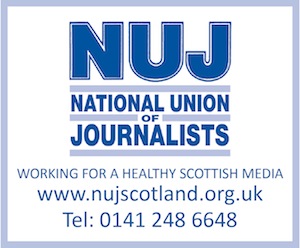HEBRIDES: Islands on the Edge is described by BBC Scotland as a “major new landmark wildlife series” that was three years in the making.
It was produced by independent television company, Maramedia, in association with Otter Films, and, here, executive producer for Maramedia, Nigel Pope, whose credits include Big Cat Diary and Springwatch, answers the questions.
Hebrides: Islands on the Edge begins this evening on BBC One Scotland, at 2100. It is a four-part series.
Who commissioned the series?
The gestation period on this has been a lengthy one, but I think it has been worth it. It was four years ago when a chat with wildlife photographer, John Aitchison, in my kitchen, coalesced into: “Let’s do it – let’s make a high-end wildlife series on the west coast of Scotland.”
There is quite a bit of groundwork to be done in development for an idea like this, but, thankfully, BBC Scotland were willing to come on board with us and give the project the scope to deliver what we believe is an amazing series.
Commissioning editor, Ewan Angus, gave us the go-ahead and we worked very closely with BBC Scotland creative director, Neil McDonald.
Explain the thinking behind the production’s ‘sound and feel’
Britain is a world leader in wildlife filmmaking and many of the people making these series are Scots or have made their lives here. We just felt, let’s turn this level of expertise on something here. Instead of somewhere ostensibly more exotic like Africa or Antarctica, why not here? The islands are the most amazing place for wildlife in the UK. The scenery speaks for itself and you have the Atlantic Ocean as a backdrop, with all the majesty and dramatic weather that brings.
At the same time, we worked very hard to bring very intimate moments in the lives of an unforgettable cast of animals to the screen. There are young swallows in Islay distilleries ‘finding their wings’, stags on the sands of Rum battling for supremacy, seals fighting the Atlantic waves to protect their new-born cubs, mighty basking sharks and the aeronautic grandeur of Britain’s largest predator – the white-tailed eagle. And lots more.
And then there is the fantastic Ewan McGregor doing the narration. We kind of had to go ‘round the backdoor’ to get him, having stalled with the conventional routes. Doug Allan – another of the Scottish wildlife supremos – had an email for Ewan’s dad and we got some clips through that way. Once Ewan saw those, that was it. We had the scoop of getting an international and very Scottish movie star on board. And he proved to be pretty great.
Who are the key personnel? How were they recruited?
John Aitchison lives on the west coast and he is renowned as a specialist in photographing otters but he is also something of a bird man – there are few to touch him. He did the bulk of the photography for the series, and, as well as the birds, he captured some fantastic and emotionally-charged footage with a range of animals – from rutting stags on Rum to stories with seals which will tug on the heartstrings.
Doug Anderson, our underwater cameraman extraordinaire, has captured amazing stuff with basking sharks, coral and sealife. He ‘cut his teeth’ as a diver during his 20s, scallop diving, commercially, off Arisaig, before striking out into filming,
I suppose it is a bit of club – natural history filmmaking – and we all know each other. But the commitment to doing this here in Scotland was very much a driving force in the partnership.
What kit and software?
Most of it was shot on a Panasonic Varicam, a tapeless camera which allows you to vary frame-rates which is very important for a blue chip wildlife show. Underwater, we used the same camera in a special housing. We also used infra-red cameras, remote cameras for filming in nests, polecams for underwater dolphins and the remote camera for underwater salmon.
The deer, gannets, Corryvreckan whirlpool and white-tailed eagles were filmed using a super high-speed camera called the Phantom Flex, which runs at up to 1,000fps.
The aerials were executed on a cineflex stabilised camera mounted on a powerful twin-engine Squirrel helicopter.
There were a lot of file formats involved, but mainly we shot on P2 cards then edited at on Avid at DNX36 before data-conforming up to DNX185. Serious Facilities managed the data for us.
What have been the main production challenges?
We are all ‘old hands’ at the waiting game which is wildlife photography and that whole thing about sitting in hides from dawn to dusk, becoming part of the landscape so that we don’t upset the animals, and just letting them do their thing. Unsurprisingly, the weather was a major factor. In 2011, it seemed that it rained for eight months and in 2012 there were extended spells of balmy warmth and even drought in the isles. But both add to the magic of imagery in the series.
Over and above that, the biggest challenge was getting the team on the right ferry to get the crucial shot. And then on another ferry for another island.
What did you most learn and enjoy from the experience?
For wildlife, beauty and wonder, Scotland is up there with anywhere the world.
And the welcome from the people of the isles, which was the best and the warmest I’ve experienced in 20 years of filmmaking.
I’m so proud to have achieved this in Scotland which doesn’t really have a long tradition of natural history filmmaking. I’m really hoping we can grow Maramedia here and create more business in this genre. There’s nowhere better!





